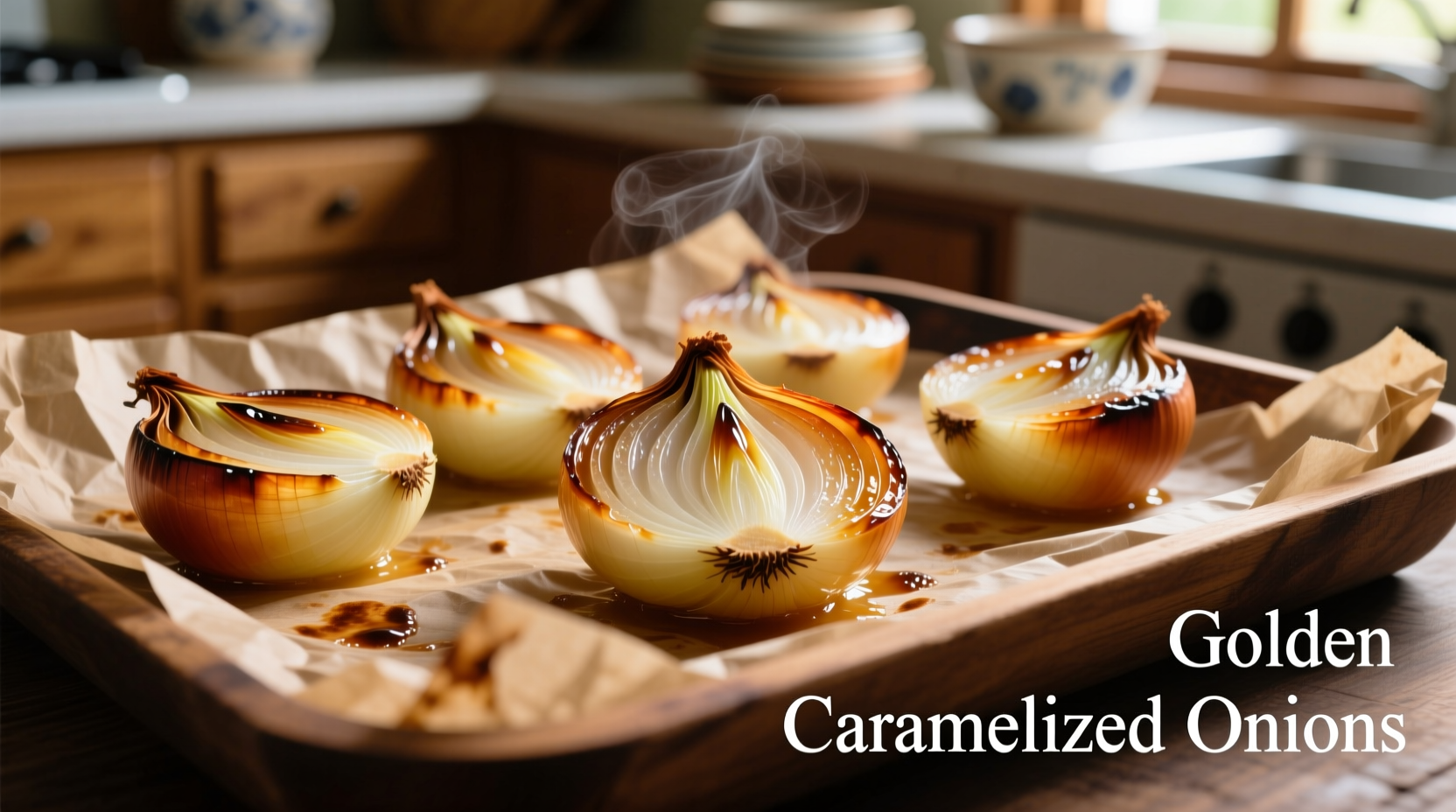Why Baking Beats Other Onion Cooking Methods
While sautéing and frying onions are common techniques, baking unlocks unique flavor profiles through controlled, even heat distribution. Unlike stovetop methods that risk uneven cooking or burning, oven baking allows the natural sugars in onions to caramelize gradually without constant attention. This slow transformation converts the pungent compounds in raw onions into complex sweet notes through the Maillard reaction and caramelization.
| Cooking Method | Time Required | Flavor Development | Texture Result |
|---|---|---|---|
| Baking (whole) | 30-45 minutes | Deep, complex sweetness | Uniformly tender |
| Sautéing | 10-15 minutes | Moderate caramelization | Varies by stirring frequency |
| Grilling | 8-12 minutes | Smoky char notes | Exterior char, interior crisp |
| Raw | None | Sharp, pungent | Crisp |
Selecting the Perfect Onion for Baking
Not all onions respond equally to baking. Yellow onions provide the best balance of sweetness and structure, maintaining shape while developing rich flavor. Sweet varieties like Vidalia or Walla Walla caramelize faster but can become too soft. Red onions retain more color contrast but have slightly less sugar content. For whole baking, choose medium-sized onions (2.5-3 inches in diameter) with firm, unblemished skins.
Step-by-Step Baking Process
Follow this professional technique for perfectly baked onions every time:
- Preparation: Peel onions while keeping root end intact to maintain structure
- Trimming: Cut 1/4 inch from top (stem end) but leave root end whole
- Seasoning: Place on parchment-lined baking sheet, drizzle with 1 tsp olive oil per onion, sprinkle with sea salt
- Baking: Roast at 400°F (200°C) for 30-45 minutes until knife slides in easily
- Finishing: Remove from oven, let rest 5 minutes before serving
| Baking Stage | Time Elapsed | Visual Cues | Internal Temperature |
|---|---|---|---|
| Initial | 0 minutes | Translucent white layers | Room temperature |
| Early Caramelization | 15 minutes | Edges beginning to brown | 140°F (60°C) |
| Mid-Process | 25 minutes | Golden edges, softening texture | 170°F (77°C) |
| Perfect Finish | 35 minutes | Deep golden brown, tender throughout | 190°F (88°C) |
When Baking Works Best (And When It Doesn't)
Baking shines for applications requiring mellow, sweet onion flavor without sharpness. It's ideal for:
- Whole onion side dishes
- Base for soups and stews
- Vegetable medleys
- Meal prep components
However, baking isn't suitable when you need:
- Quick cooking for last-minute dishes (use sautéing instead)
- Crisp texture (try grilling or roasting at higher heat)
- Raw onion bite in salads or salsas
- Very thin slices for pizza toppings
Pro Tips for Flavor Enhancement
Elevate your baked onions with these chef-recommended techniques:
- Add a splash of balsamic vinegar during the last 10 minutes for complex acidity
- Stuff cavity with fresh thyme or rosemary before baking
- Wrap in foil with a pat of butter for extra richness
- Try different fats: duck fat creates deeper flavor than olive oil
- Finish with flaky sea salt and fresh herbs after baking

Storage and Usage Ideas
Baked onions maintain quality for 4 days refrigerated in airtight containers. For longer storage, freeze in single layers before transferring to freezer bags (up to 3 months). Use baked onions in these creative ways:
- Blend into creamy soups for natural sweetness
- Add to grain bowls for caramelized flavor
- Top burgers or sandwiches instead of raw onions
- Mash with roasted garlic for bread spread
- Chop finely for quiche or frittata fillings
Frequently Asked Questions
Can I bake onions without oil?
Yes, you can bake onions without oil by using broth or simply dry baking, though the results will be less rich. Without fat, the onions won't develop the same depth of caramelization, but they'll still soften and sweeten. For oil-free baking, wrap onions in parchment paper with a tablespoon of vegetable broth to create steam and prevent drying.
Why do my baked onions turn out bitter?
Bitterness typically occurs when onions bake at too high a temperature or for too long. The ideal baking temperature is 400°F (200°C) - higher temperatures cause burning before proper caramelization. Also, ensure you're using fresh onions without sprouting, as older onions develop bitter compounds. If bitterness occurs, deglaze the pan with a small amount of acid like lemon juice or vinegar to balance flavors.
How do I prevent baked onions from becoming too watery?
Onions release significant moisture during baking. To prevent excess water, slice off the top (stem end) before baking to create an escape route for steam. Avoid covering onions completely with foil, which traps moisture. For whole onions, make a small slit in the top skin to allow steam to escape. After baking, let onions drain briefly on a wire rack before serving to remove excess liquid.
Can I bake multiple onion varieties together?
Yes, but be mindful of different sugar contents and densities. Yellow onions need the standard 30-45 minutes, while sweeter varieties like Vidalia may require 5-10 minutes less baking time. Red onions hold their shape well but have slightly less sugar, so they might need an extra few minutes. When baking mixed varieties, check each type separately after 25 minutes to prevent overcooking the sweeter varieties.
What's the science behind onions becoming sweet when baked?
Raw onions contain sulfur compounds that create their sharp flavor. During baking, heat breaks down these compounds while the natural sugars (fructose and sucrose) undergo caramelization. The Maillard reaction between amino acids and reducing sugars creates new flavor compounds. As moisture evaporates, the sugar concentration increases, enhancing sweetness. This transformation typically completes around 190°F (88°C), which is why proper internal temperature matters more than just time.











 浙公网安备
33010002000092号
浙公网安备
33010002000092号 浙B2-20120091-4
浙B2-20120091-4